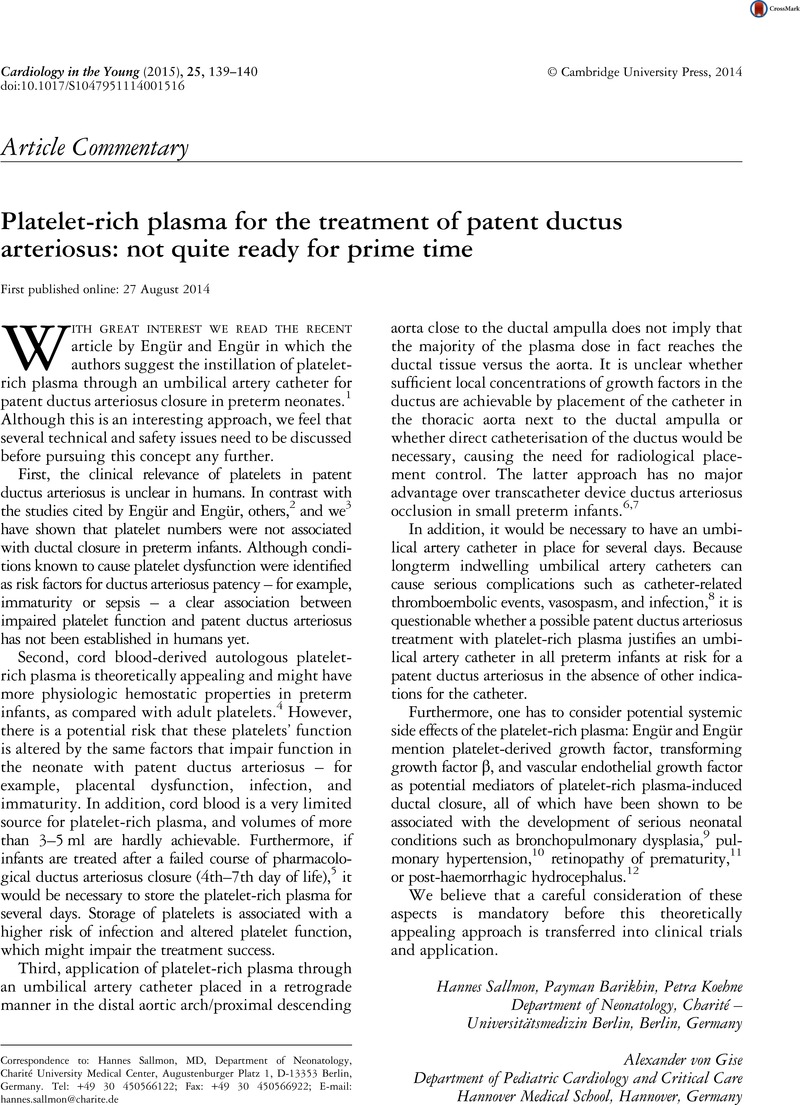Crossref Citations
This article has been cited by the following publications. This list is generated based on data provided by Crossref.
Demir, Nihat
Peker, Erdal
Ece, İbrahim
Ağengin, Kemal
Bulan, Keziban Asli
and
Tuncer, Oğuz
2015.
Is platelet mass a more significant indicator than platelet count of closure of patent ductus arteriosus?.
The Journal of Maternal-Fetal & Neonatal Medicine,
p.
1.
Sallmon, Hannes
Metze, Boris
Koehne, Petra
Opgen-Rhein, Bernd
Weiss, Katja
Will, Joachim C.
Franke, Christina Victoria
Hansmann, Georg
Koestenberger, Martin
Bührer, Christoph
Berger, Felix
Weber, Sven C.
and
Cremer, Malte
2020.
Mature and immature platelets during the first week after birth and incidence of patent ductus arteriosus.
Cardiology in the Young,
Vol. 30,
Issue. 6,
p.
769.
Sallmon, Hannes
Timme, Natalie
Atasay, Begüm
Erdeve, Ömer
Hansmann, Georg
Singh, Yogen
Weber, Sven C.
and
Shelton, Elaine L.
2021.
Current Controversy on Platelets and Patent Ductus Arteriosus Closure in Preterm Infants.
Frontiers in Pediatrics,
Vol. 9,
Issue. ,
Sallmon, Hannes
and
Delaney, Cassidy A.
2023.
Platelets and ductus arteriosus closure in neonates.
Seminars in Perinatology,
Vol. 47,
Issue. 2,
p.
151719.



